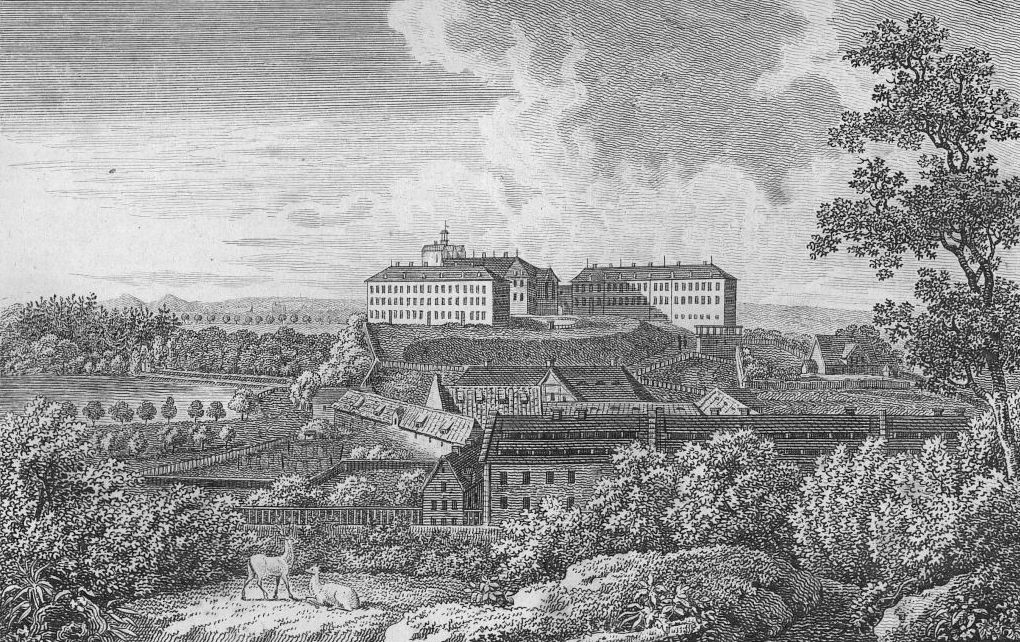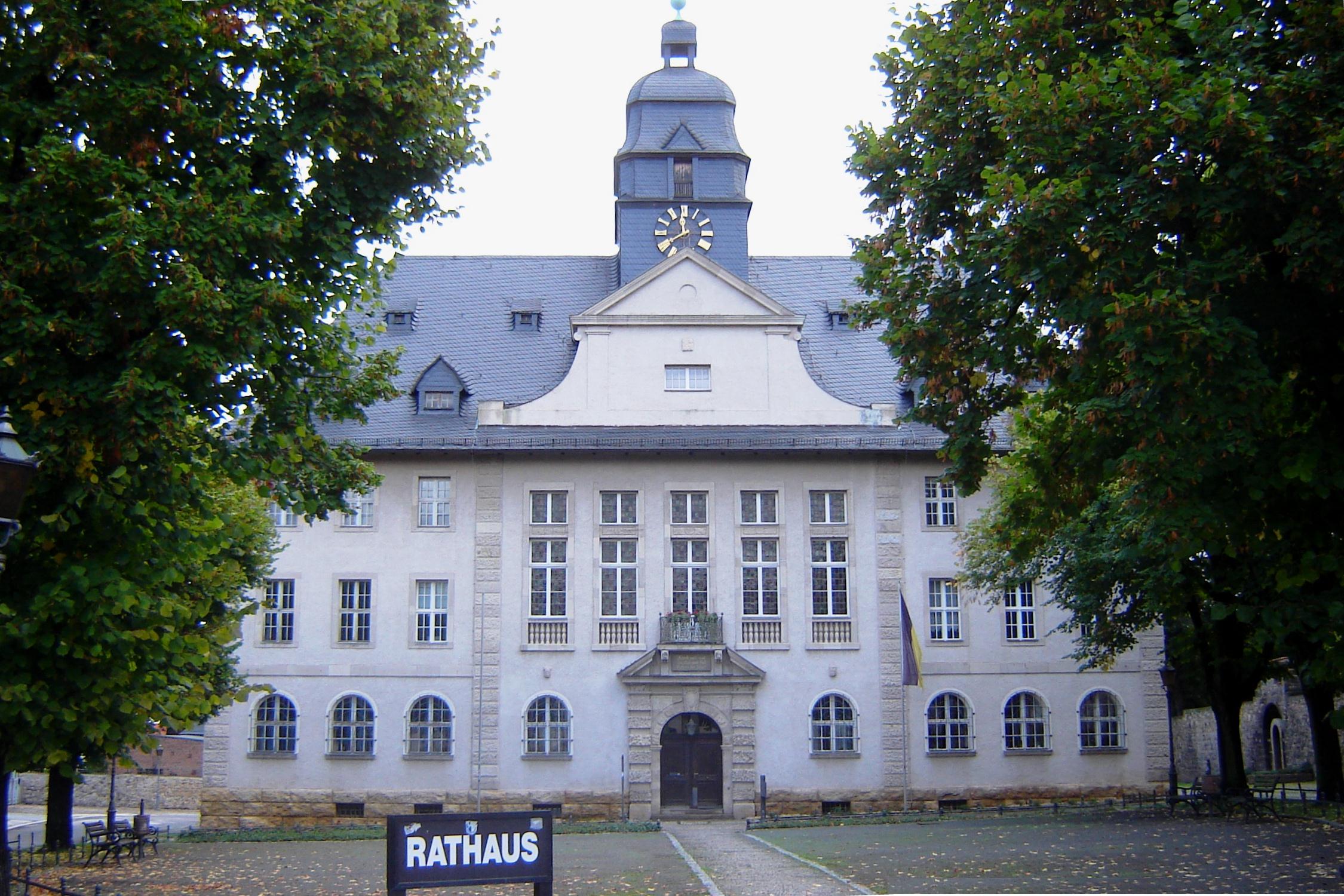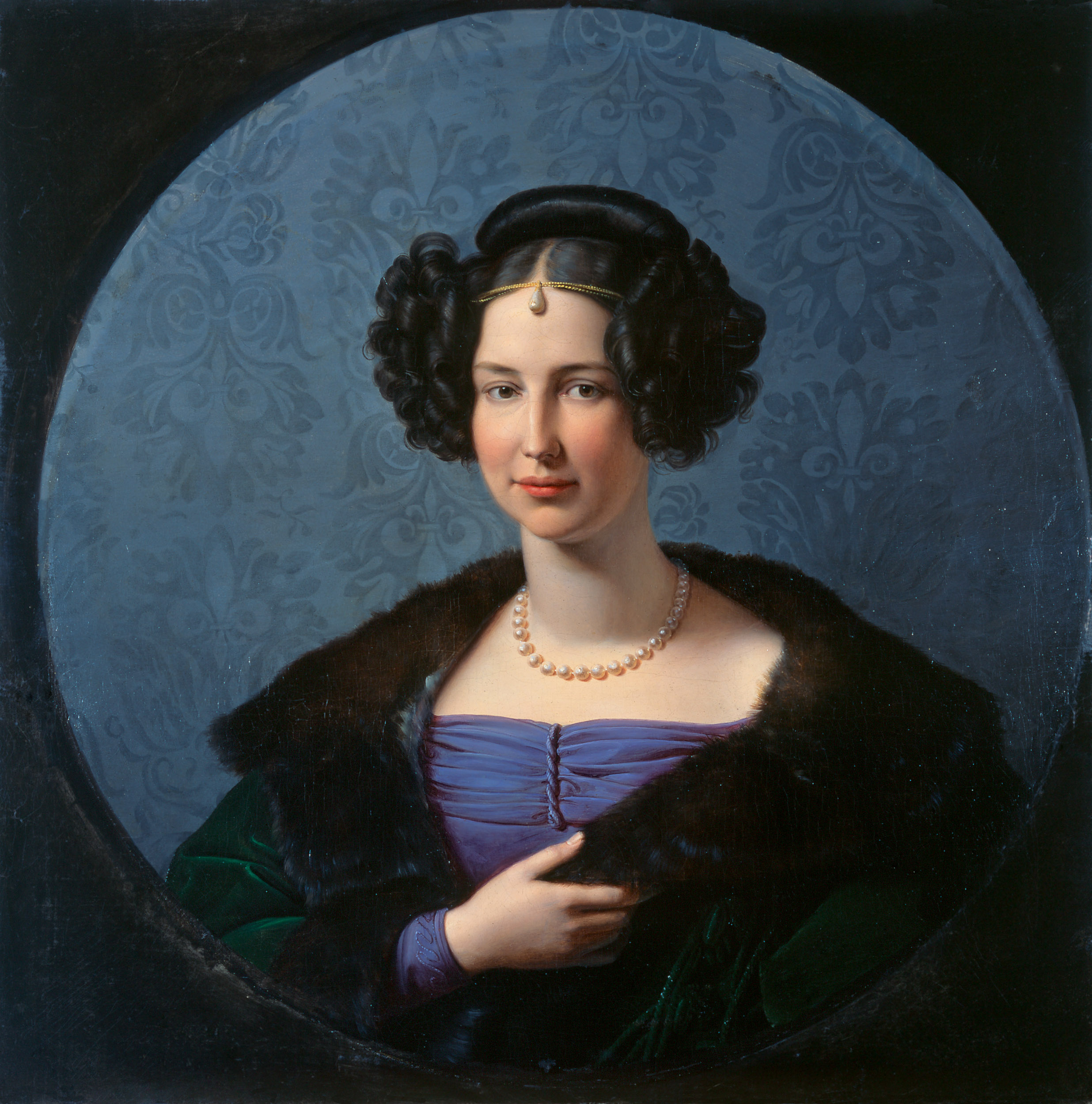Ballenstedt on:
[Wikipedia]
[Google]
[Amazon]
Ballenstedt is a town in the Harz district, in the German state of
 After the war, the town and the former monastery were rebuilt as a
After the war, the town and the former monastery were rebuilt as a
 Seats in the municipal assembly () as of 2004 elections:
* Christian Democratic Union: 8 (41.2%)
* The Left: 4 (18.2%)
*
Seats in the municipal assembly () as of 2004 elections:
* Christian Democratic Union: 8 (41.2%)
* The Left: 4 (18.2%)
*
 * Ballenstedt Castle: Baroque three-winged building, renovated in the 18th century, grave of
* Ballenstedt Castle: Baroque three-winged building, renovated in the 18th century, grave of
 * Princess Louise of Anhalt-Bernburg (1799–1882), Princess of Prussia
* Gustav Strube (1867–1953), composer
* Wilhelm von Krosigk (1871–1953), officer of Imperial Navy, ship commander,
* Princess Louise of Anhalt-Bernburg (1799–1882), Princess of Prussia
* Gustav Strube (1867–1953), composer
* Wilhelm von Krosigk (1871–1953), officer of Imperial Navy, ship commander,
Ballenstedt-Blog.de (german)
Ballenstedt-Blog.de (english)
{{Authority control Towns in the Harz Harz (district) 1030s establishments in the Holy Roman Empire 1030 establishments in Europe Populated places established in the 11th century
Saxony-Anhalt
Saxony-Anhalt ( ; ) is a States of Germany, state of Germany, bordering the states of Brandenburg, Saxony, Thuringia and Lower Saxony. It covers an area of
and has a population of 2.17 million inhabitants, making it the List of German states ...
.
Geography
It is situated at the northern rim of theHarz
The Harz (), also called the Harz Mountains, is a highland area in northern Germany. It has the highest elevations for that region, and its rugged terrain extends across parts of Lower Saxony, Saxony-Anhalt, and Thuringia. The name ''Harz'' der ...
mountain range, about 10 km (6 mi) southeast of Quedlinburg
Quedlinburg () is a town situated just north of the Harz mountains, in the Harz (district), district of Harz in the west of Saxony-Anhalt, Germany. As an influential and prosperous trading centre during the early Middle Ages, Quedlinburg becam ...
. The municipal area comprises the villages of Asmusstedt, Badeborn, Opperode, Radisleben, and Rieder. Ballenstedt is a stop on the scenic Romanesque Road.
History
TheSaxon
The Saxons, sometimes called the Old Saxons or Continental Saxons, were a Germanic people of early medieval "Old" Saxony () which became a Carolingian " stem duchy" in 804, in what is now northern Germany. Many of their neighbours were, like th ...
count Esico of Ballenstedt (c. 1000–1059/60) was mentioned in a 1030 entry in the medieval chronicles of the Annalista Saxo
The Annalista Saxo ("Saxon annalist") is the anonymous author of an important imperial chronicle, believed to have originated in the mid-12th century at Nienburg Abbey in the Duchy of Saxony.
General
The chronicle of the "Annalista Saxo" is a ...
and in a 1036 deed issued by Emperor Conrad II. He was a son of one Count Adalbert, who held the office of a ''Vogt
An , sometimes simply advocate, (German, ), or (French, ), was a type of medieval office holder, particularly important in the Holy Roman Empire, who was delegated some of the powers and functions of a major feudal lord, or for an institutio ...
'' of Nienburg Abbey, and Hidda, a daughter of Margrave Odo I of the Saxon Ostmark. Esico, whose sister Uta married Margrave Eckard II of Meissen is considered the progenitor of the House of Ascania
The House of Ascania () was a dynasty of German rulers. It is also known as the House of Anhalt, which refers to its longest-held possession, Principality of Anhalt, Anhalt.
The Ascanians are named after Ascania (or Ascaria) Castle, known as ' ...
. He had a collegiate church
In Christianity, a collegiate church is a church where the daily office of worship is maintained by a college of canons, a non-monastic or "secular" community of clergy, organised as a self-governing corporate body, headed by a dignitary bearing ...
erected in Ballenstedt, dedicated to Saints Pancras and Abundius, in the presence of Emperor Henry III in 1046.
Ballenstedt church was mentioned in a charter of 1073 by Henry IV in which the emperor confirmed to the church the possession of 21 ''mansi'' previously granted by his father Henry III. In 1123 Otto the Rich together with his son Albert the Bear
Albert the Bear (; 1100 – 18 November 1170) was the first margrave of Brandenburg from 1157 to his death and was briefly duke of Saxony between 1138 and 1142.
Life
Albert was the only son of Otto, Count of Ballenstedt, and Eilika of Sa ...
, who would become the first ruler of Brandenburg
Brandenburg, officially the State of Brandenburg, is a States of Germany, state in northeastern Germany. Brandenburg borders Poland and the states of Berlin, Mecklenburg-Vorpommern, Lower Saxony, Saxony-Anhalt, and Saxony. It is the List of Ger ...
, established a Benedictine
The Benedictines, officially the Order of Saint Benedict (, abbreviated as O.S.B. or OSB), are a mainly contemplative monastic order of the Catholic Church for men and for women who follow the Rule of Saint Benedict. Initiated in 529, th ...
monastery at the site. Albert and was buried at the crypt of the abbey church in 1070; a monument for him is located in the town's park. Albert's grandson Henry I became the first Prince of Anhalt in 1218.
In 1512 the citizens of Ballenstedt were vested with brewing rights by the Ascanian prince Wolfgang of Anhalt-Köthen. After Wolfgang met with Martin Luther
Martin Luther ( ; ; 10 November 1483 – 18 February 1546) was a German priest, Theology, theologian, author, hymnwriter, professor, and former Order of Saint Augustine, Augustinian friar. Luther was the seminal figure of the Reformation, Pr ...
at the 1521 Diet of Worms
The Diet of Worms of 1521 ( ) was an Imperial Diet (Holy Roman Empire), imperial diet (a formal deliberative assembly) of the Holy Roman Empire called by Emperor Charles V, Holy Roman Emperor, Charles V and conducted in the Imperial Free City o ...
, he became one of the first Protestant
Protestantism is a branch of Christianity that emphasizes Justification (theology), justification of sinners Sola fide, through faith alone, the teaching that Salvation in Christianity, salvation comes by unmerited Grace in Christianity, divin ...
rulers in the Holy Roman Empire
The Holy Roman Empire, also known as the Holy Roman Empire of the German Nation after 1512, was a polity in Central and Western Europe, usually headed by the Holy Roman Emperor. It developed in the Early Middle Ages, and lasted for a millennium ...
. Ballenstedt Abbey was stormed and plundered during the German Peasants' War, whereafter Prince Wolfgang had the monastery secularised in 1525. He chose Ballenstedt as a residence and granted it town privileges in 1543. It received city walls in 1551; a town hall was first mentioned in 1582. As the Anhalt princes supported King Christian IV of Denmark
Christian IV (12 April 1577 – 28 February 1648) was King of Denmark and King of Norway, Norway and List of rulers of Schleswig-Holstein, Duke of Holstein and Schleswig from 1588 until his death in 1648. His reign of 59 years and 330 days is th ...
during the Thirty Years' War
The Thirty Years' War, fought primarily in Central Europe between 1618 and 1648, was one of the most destructive conflicts in History of Europe, European history. An estimated 4.5 to 8 million soldiers and civilians died from battle, famine ...
, Ballenstedt was raided and plundered by Imperial troops under Albrecht von Wallenstein
Albrecht Wenzel Eusebius von Wallenstein, Duke of Friedland (; 24 September 1583 – 25 February 1634), also von Waldstein (), was a Bohemian military leader and statesman who fought on the Catholic side during the Thirty Years' War (1618–16 ...
in 1626.
 After the war, the town and the former monastery were rebuilt as a
After the war, the town and the former monastery were rebuilt as a Baroque
The Baroque ( , , ) is a Western Style (visual arts), style of Baroque architecture, architecture, Baroque music, music, Baroque dance, dance, Baroque painting, painting, Baroque sculpture, sculpture, poetry, and other arts that flourished from ...
summer residence by the Ascanian princes of Anhalt-Bernburg
Anhalt-Bernburg was a Princes of the Holy Roman Empire, principality of the Holy Roman Empire and a duchy of the German Confederation ruled by the House of Ascania with its residence at Bernburg in present-day Saxony-Anhalt. It emerged as a subd ...
. In 1765 the enlightened prince Frederick Albert completely moved his residence from Bernburg
Bernburg (Saale) () is a town in Saxony-Anhalt, Germany, capital of the Salzlandkreis district. The former residence of the Anhalt-Bernburg princes is known for its Renaissance castle.
Geography
The town centre is situated in the fertile Magdeb ...
to Ballenstedt Castle and induced a time of prosperity, including the erection of a castle theatre in 1788, the oldest theatre in Saxony-Anhalt and the domain of composers like Albert Lortzing and Franz Liszt
Franz Liszt (22 October 1811 – 31 July 1886) was a Hungarian composer, virtuoso pianist, conductor and teacher of the Romantic music, Romantic period. With a diverse List of compositions by Franz Liszt, body of work spanning more than six ...
.
A part of the re-unified Duchy of Anhalt from 1863 on, Ballenstedt became known as a residential town for the well-to-do retired like Princess Friederike of Schleswig-Holstein-Sonderburg-Glücksburg, who died at Ballenstedt Castle in 1902, or the painter and author Wilhelm von Kügelgen, whose house is now a museum.
Politics
Free Voters
Free Voters (, FW) is a political party in Germany. It originates as an umbrella organisation of several Free Voters Associations (), associations of people which participate in an election without having the status of a registered party. These a ...
: 3 (12.6%)
* Free Democratic Party: 3 (12.5%)
*Social Democratic Party of Germany
The Social Democratic Party of Germany ( , SPD ) is a social democratic political party in Germany. It is one of the major parties of contemporary Germany. Saskia Esken has been the party's leader since the 2019 leadership election together w ...
: 1 (7.5%)
*Independent: 1 (5.4%)
The coat of arms is derived from the insignia of the Counts of Ballenstedt, which is also the origin of the coat of arms of Saxony
The coat of arms of the present-day German free state of Saxony shows a tenfold horizontally-partitioned ('' Barry of ten'') field of black (''sable'') and gold/yellow ('' or'') stripes,
. It was first manifested in 1560 after Ballenstedt received town rights.
Places of interest
 * Ballenstedt Castle: Baroque three-winged building, renovated in the 18th century, grave of
* Ballenstedt Castle: Baroque three-winged building, renovated in the 18th century, grave of Albert the Bear
Albert the Bear (; 1100 – 18 November 1170) was the first margrave of Brandenburg from 1157 to his death and was briefly duke of Saxony between 1138 and 1142.
Life
Albert was the only son of Otto, Count of Ballenstedt, and Eilika of Sa ...
* Castle Park: created by Peter Joseph Lenné; castle and castle park belong to the Saxony-Anhalt Garden Dreams project
* Ballenstedt Castle Theatre: played by Albert Lortzing and Franz Liszt
Franz Liszt (22 October 1811 – 31 July 1886) was a Hungarian composer, virtuoso pianist, conductor and teacher of the Romantic music, Romantic period. With a diverse List of compositions by Franz Liszt, body of work spanning more than six ...
* Großer Gasthof castle hotel: originally built in 1733 as an armoury, converted in 1756 by the Brunswick-Wolfenbüttel ducal master builder, Martin Peltier de Belfort, into a guest house
* Local History Museum, opposite the Großer Gasthof in the upper part of the avenue
* Kügelgen House, Kügelgenstr. 35a
* Yellow House (''Gelbes Haus''), on the exit to the town towards Rieder, built as a roadside toll house
* Allee: representative, a kilometre long approach to the castle, centre point of the town
* Old Town Hall (''Altes Rathaus''): timber-framed building erected in 1683
* New Town Hall (''Neues Rathaus''): representative building, built in 1906 based on a design by Berlin architect Alfred Messel
* St. Nicholas' Church: Late Gothic church, built in 1326, burnt down in 1498, rebuilt in 1501
* Town wall, can still be seen in ''Wallstraße''
* Wall towers along the town wall (Oberturm, Unterturm, Marktturm – the latter is accessible, key in the restaurant opposite)
* Swimming baths, built 1907–08
* Teufelsmauer (Harz)
* Gegensteine nature reserve
* Bismarck Tower, Opperode
* Roseburg (castle)
* Oberhof Ballenstedt
Transport
Ballenstedt is located at the ''Bundesstraße
''Bundesstraße'' (, ), abbreviated ''B'', is the denotation for German and Austrian national highways.
Germany
Germany's ''Bundesstraßen'' network has a total length of about 40,000 km.
German ''Bundesstraßen'' are labelled with re ...
'' (federal highway) 185, leading to the ''Bundesstraße 6'' and the ''Bundesautobahn 14
is an autobahn in eastern Germany.
The route comprises two disconnected sections:
* The old A 241. A North–south route in Mecklenburg-Vorpommern which runs from Wismar to Schwerin.
* The original A 14. A West–east route whi ...
''. Train service was suspended in 2003. A small asphalt runway is about 5 km (3 mi) outside the town.
Notable people
Born in Ballenstedt
* Uta von Ballenstedt (1000 - before 1046), founder of the Naumburg Cathedral * Johann Arndt (1555–1621), theologian * Pauline zur Lippe (1769–1820), regent of the Principality of Lippe * Caroline Bardua (1781–1864), painter * Princess Louise of Anhalt-Bernburg (1799–1882), Princess of Prussia
* Gustav Strube (1867–1953), composer
* Wilhelm von Krosigk (1871–1953), officer of Imperial Navy, ship commander,
* Princess Louise of Anhalt-Bernburg (1799–1882), Princess of Prussia
* Gustav Strube (1867–1953), composer
* Wilhelm von Krosigk (1871–1953), officer of Imperial Navy, ship commander, Rear Admiral
Rear admiral is a flag officer rank used by English-speaking navies. In most European navies, the equivalent rank is called counter admiral.
Rear admiral is usually immediately senior to commodore and immediately below vice admiral. It is ...
* Wilhelm Thiele (1897–1990), politician (NSDAP)
* Princess Marie-Auguste of Anhalt (1898–1983), Princess
* Eduard, Prince of Anhalt (born 1941), since 1963 head of the house Anhalt-Ascania
* Justus Pfaue (1942–2014), novelist and screenwriter
* Eckhard Lesse (born 1948), long-distance runner
Died in Ballenstedt
* Karl Christian Agthe, composer, born 16 June 1762 in Hettstedt, died 27 November 1797 * Wilhelm von Kügelgen, painter, born 20 November 1802 inSaint Petersburg
Saint Petersburg, formerly known as Petrograd and later Leningrad, is the List of cities and towns in Russia by population, second-largest city in Russia after Moscow. It is situated on the Neva, River Neva, at the head of the Gulf of Finland ...
, died 25 May 1867
* Wilhelm Vöge, art historian, born 16 February 1868 in Bremen
Bremen (Low German also: ''Breem'' or ''Bräm''), officially the City Municipality of Bremen (, ), is the capital of the States of Germany, German state of the Bremen (state), Free Hanseatic City of Bremen (), a two-city-state consisting of the c ...
, died 30 December 1952.
Twin towns
*Kronberg im Taunus
Kronberg im Taunus (, ) is a town in the Hochtaunuskreis district, Hesse, Germany and part of the Frankfurt Rhein-Main Regional Authority, Frankfurt Rhein-Main urban area. Before 1866, it was in the Duchy of Nassau; in that year the whole Duchy w ...
, Germany
References
External links
*Ballenstedt-Blog.de (german)
Ballenstedt-Blog.de (english)
{{Authority control Towns in the Harz Harz (district) 1030s establishments in the Holy Roman Empire 1030 establishments in Europe Populated places established in the 11th century